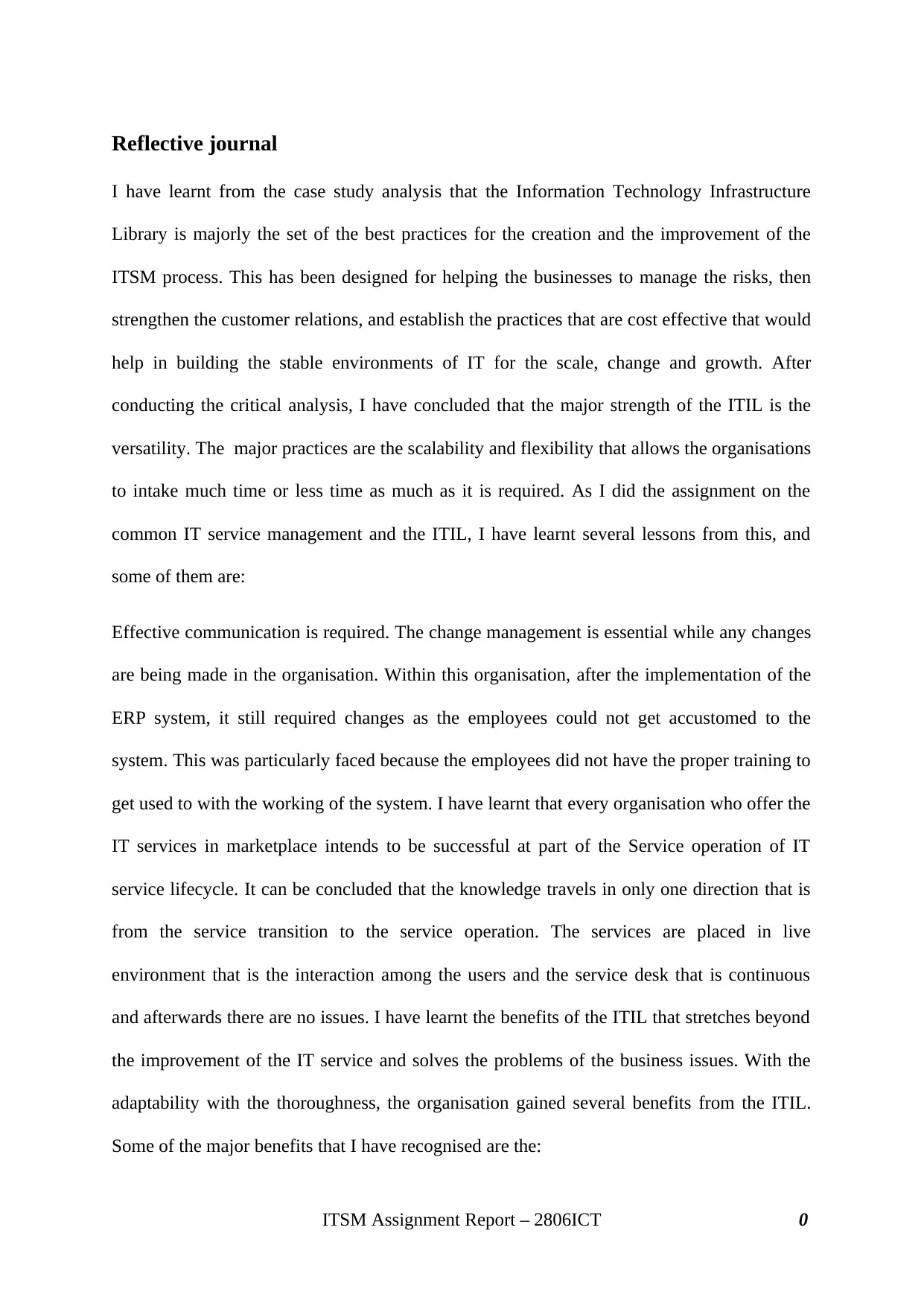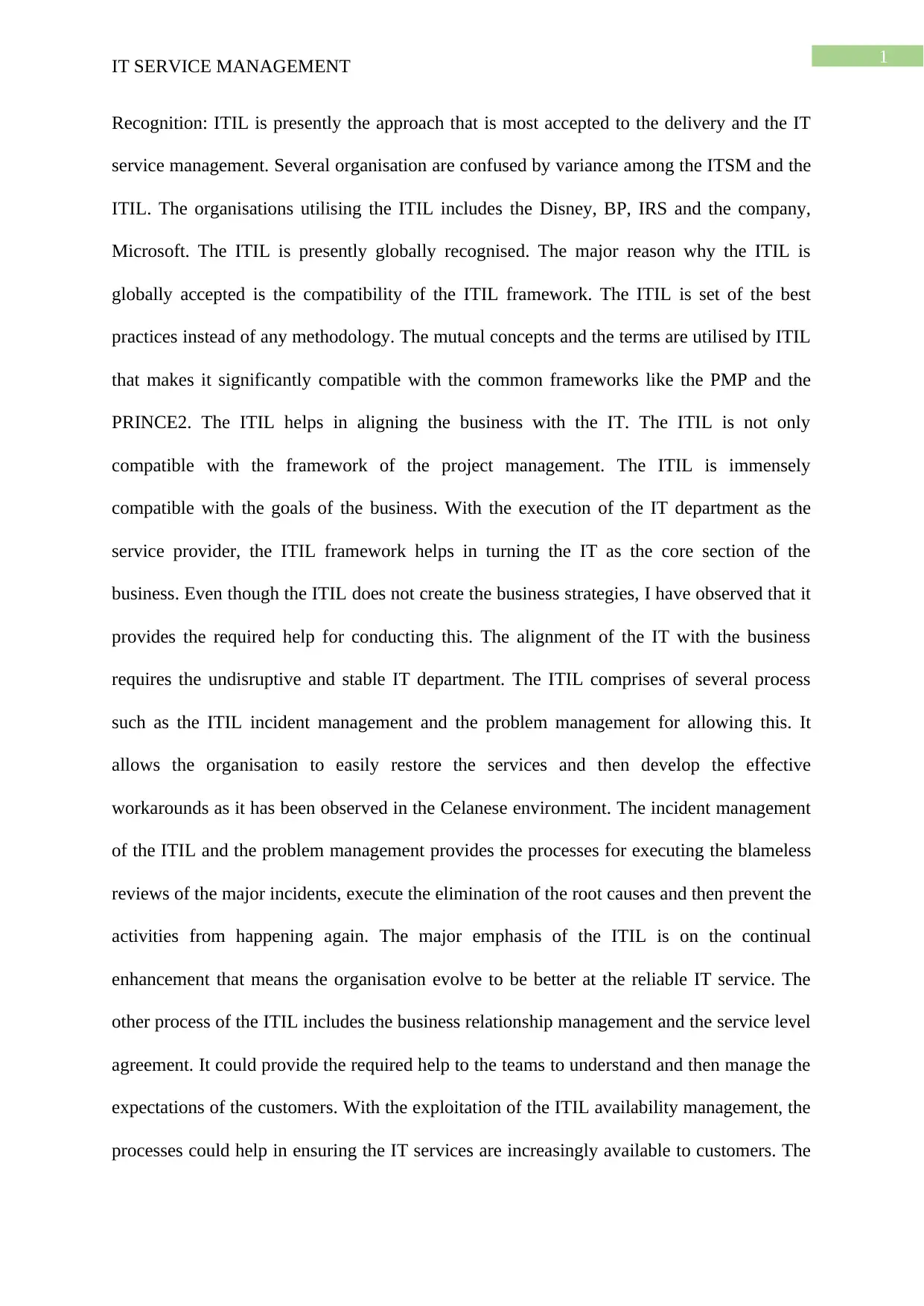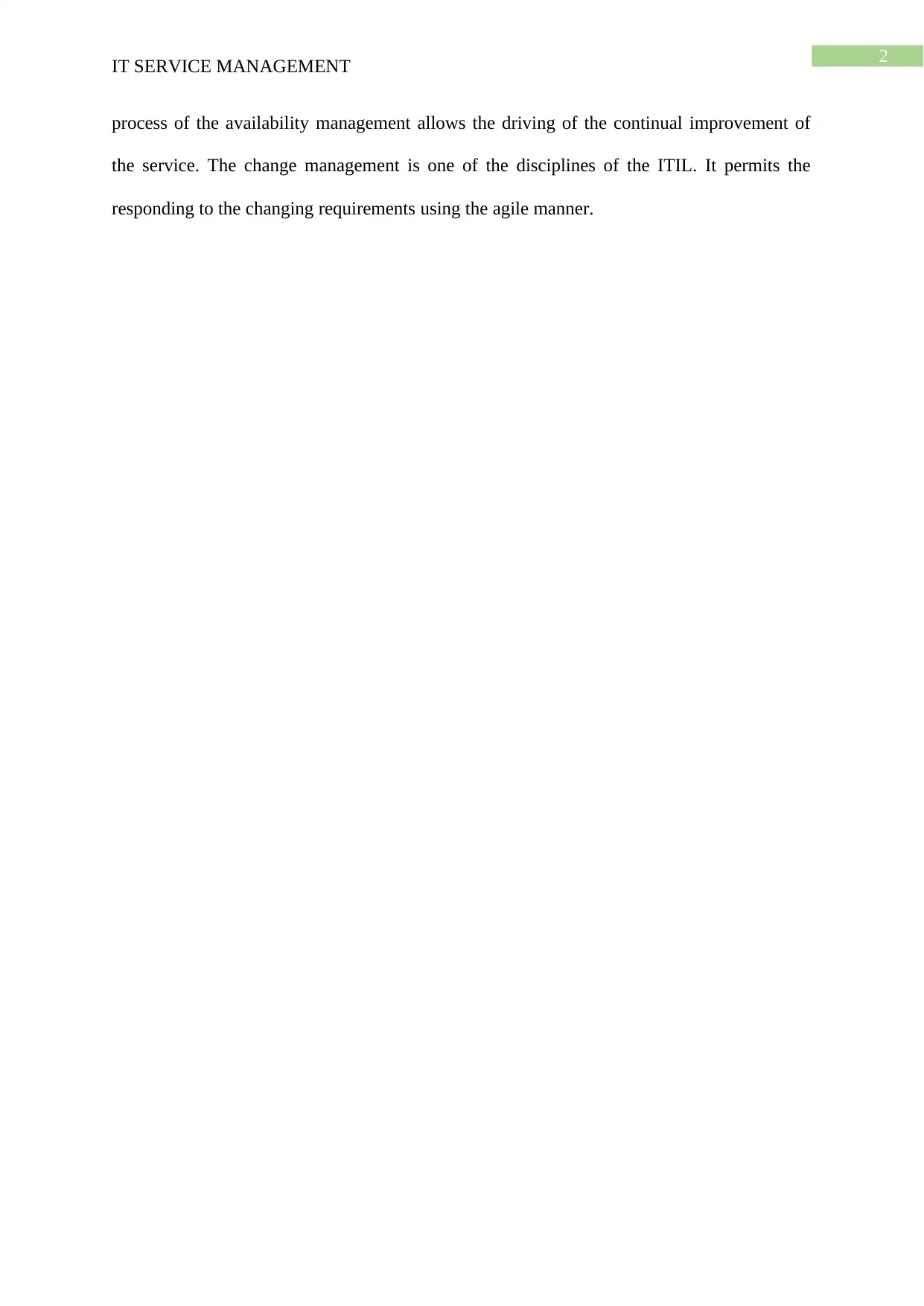2806ICT IT Service Management: Reflective Journal on ITIL & Celanese
VerifiedAdded on 2023/04/08
|3
|749
|290
AI Summary
This reflective journal discusses lessons learned from analyzing the Celanese case study concerning ITIL (Information Technology Infrastructure Library) and ITSM (IT Service Management). The journal highlights the importance of effective communication, change management, and proper employee training during IT system implementations, such as ERP systems. It emphasizes ITIL's versatility in managing risks, strengthening customer relations, and establishing cost-effective IT practices. The journal also identifies ITIL's benefits, including aligning IT with business goals, improving IT service reliability through incident and problem management, and ensuring continuous service enhancement through business relationship management and service level agreements. Key ITIL processes like change management are noted for their role in responding to changing requirements in an agile manner. The reflection underscores ITIL's compatibility with frameworks like PMP and PRINCE2, making it a globally recognized approach to IT service delivery and management.
1 out of 3










![[object Object]](/_next/static/media/star-bottom.7253800d.svg)